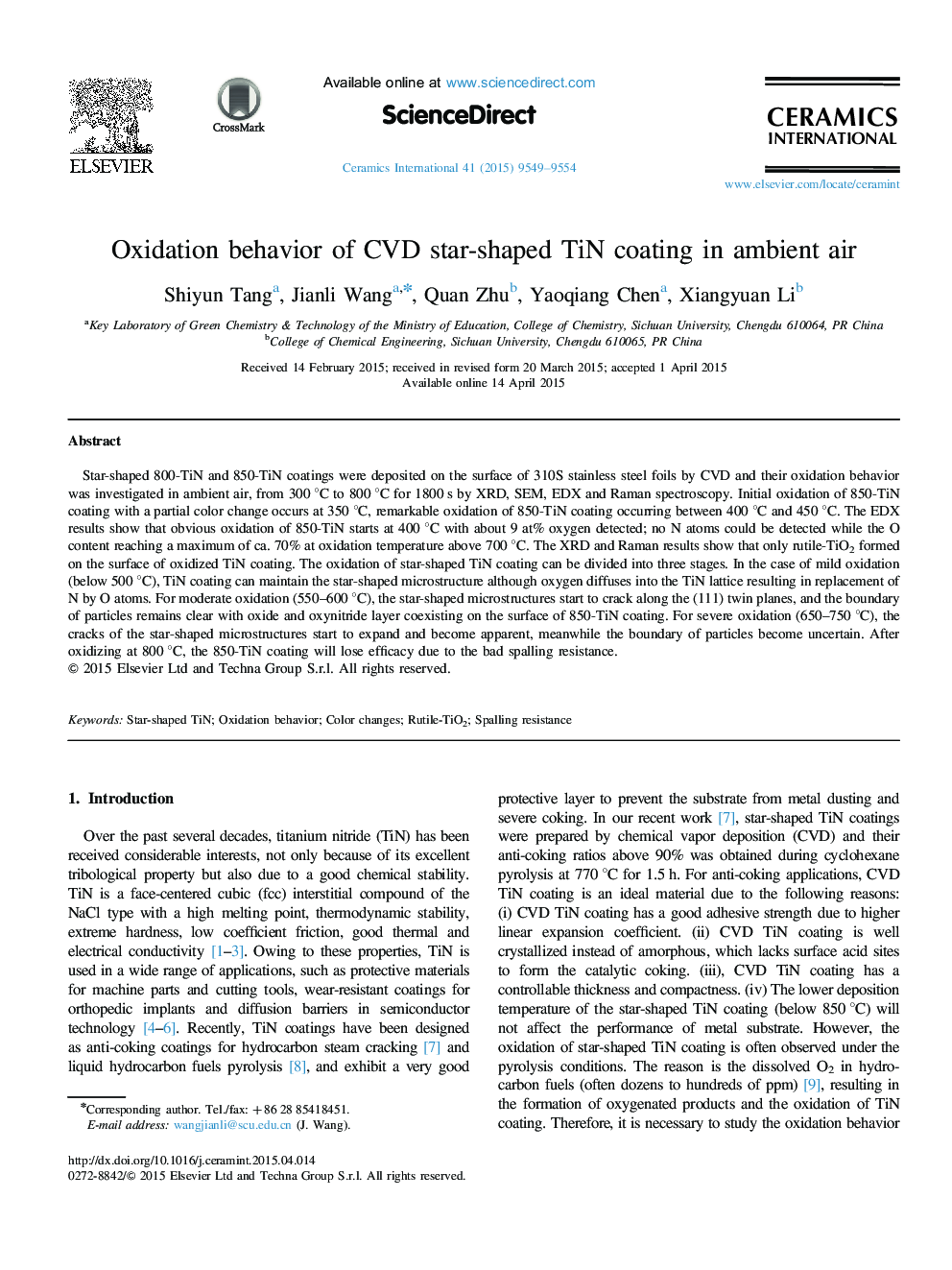| Article ID | Journal | Published Year | Pages | File Type |
|---|---|---|---|---|
| 1460232 | Ceramics International | 2015 | 6 Pages |
Star-shaped 800-TiN and 850-TiN coatings were deposited on the surface of 310S stainless steel foils by CVD and their oxidation behavior was investigated in ambient air, from 300 °C to 800 °C for 1800 s by XRD, SEM, EDX and Raman spectroscopy. Initial oxidation of 850-TiN coating with a partial color change occurs at 350 °C, remarkable oxidation of 850-TiN coating occurring between 400 °C and 450 °C. The EDX results show that obvious oxidation of 850-TiN starts at 400 °C with about 9 at% oxygen detected; no N atoms could be detected while the O content reaching a maximum of ca. 70% at oxidation temperature above 700 °C. The XRD and Raman results show that only rutile-TiO2 formed on the surface of oxidized TiN coating. The oxidation of star-shaped TiN coating can be divided into three stages. In the case of mild oxidation (below 500 °C), TiN coating can maintain the star-shaped microstructure although oxygen diffuses into the TiN lattice resulting in replacement of N by O atoms. For moderate oxidation (550–600 °C), the star-shaped microstructures start to crack along the (111) twin planes, and the boundary of particles remains clear with oxide and oxynitride layer coexisting on the surface of 850-TiN coating. For severe oxidation (650–750 °C), the cracks of the star-shaped microstructures start to expand and become apparent, meanwhile the boundary of particles become uncertain. After oxidizing at 800 °C, the 850-TiN coating will lose efficacy due to the bad spalling resistance.
